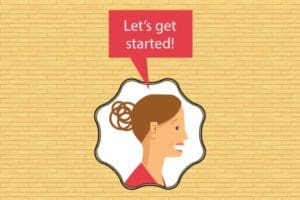Raquel Maya Carson is a DQC teacher fellow. This is the second in a series of blog posts that examine education data use in the classroom.
As a teacher, I would never dream of presenting a concept to students and immediately have the expectation of mastery. The same should apply to how concepts are presented to teachers. If I am expected to be able to effectively use data to improve my students’ outcomes and my own practice, I need to be afforded additional training and more opportunities to collaborate with my peers.
In my second-grade classroom, students are expected to be able to calculate the value of a group of coins. For some students, this may be a new concept, as the first-grade common core standards do not include money. For others, this concept may already be familiar; they may practice counting groups of coins with their families during a grocery trip. To know what my students already know on the topic, I need to gauge their prior experience (background knowledge) with coins.
Once I have an idea of what my students already know about counting coins, I can create lessons tailored to their needs. As I plan my lessons, I need to think about all the different ways my students could access the content. Have I met the needs of my visual learners? Have I met the needs of my auditory and kinesthetic learners? The lessons will also include opportunities for the students to work in groups to solve problems together and share their mathematical thinking—expressing the steps they took to solve a problem or the strategy that makes most sense for them. Only after all of this practice and collaborating do I have the expectation of mastery. This same practice and collaboration should be incorporated into teachers’ education before they need to use data in the classroom.
Training: What training do all teachers need to understand how to access data? Not all teachers are inherently savvy with Excel spreadsheets and data, and it isn’t their fault. With the number of traditional and nontraditional teacher preparation programs, it’s hard to know what data experience teachers are receiving prior to entering the classroom. While there may be a technological divide, it is also important for teachers to know that data can be organized, analyzed, and communicated without ever once touching Excel. Sure it may take longer, but a gap in technological knowledge shouldn’t prevent you from being a data-driven instructor. How can we as teachers support each other and share resources to bridge data literacy gaps? While some may argue that it is the responsibility of the school leader or district to provide such training, I argue that teachers also need to be proactive. (The Data Quality Campaign [DQC] also advocates that data literacy training for teachers is critical.)
Collaboration: How can sharing data across grade-level teams maximize a school’s ability to modify and differentiate instruction? DQC, along with most teachers and school leaders, has identified that using data in teams of teachers and school leaders is an effective practice. However, are we mindful about what student data are used within grade-level teams? Has our school leadership built a culture that highlights the importance of collaborating around data? (EngageNY provides some practical resources to help schools implement data teams.) There should be consistent dialogue and continuity within a school when it comes to what data are gathered and how they are informing instruction.
Training and collaboration around education data in the classroom are closely related. Schools can think about how to empower teachers to form professional learning communities (see ASCD’s What Is a Professional Learning Community?) or data team (see some resources and planning templates for data teams from the Connecticut Department of Education) or support grade-level teams with data coaches. Collaboration doesn’t have to be confined to the walls of your school either. Some of the best collaboration happens outside the classroom and increasingly online, using platforms like Twitter chats.
See Raquel’s first blog post here.


